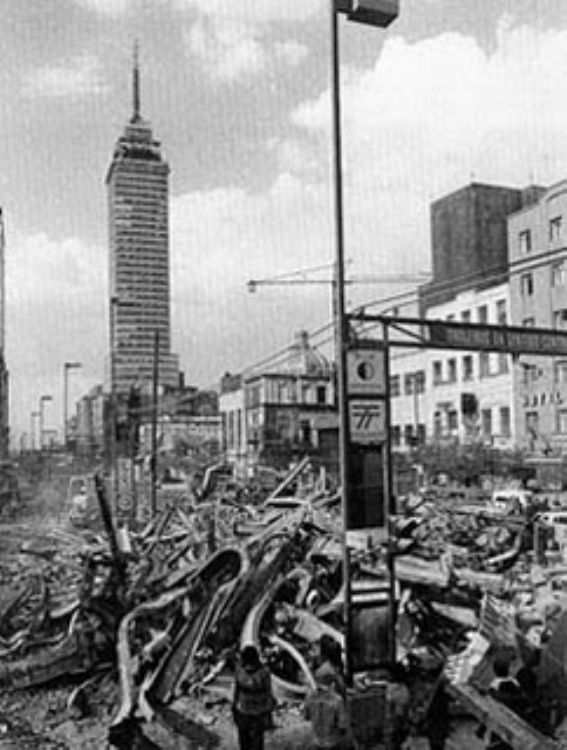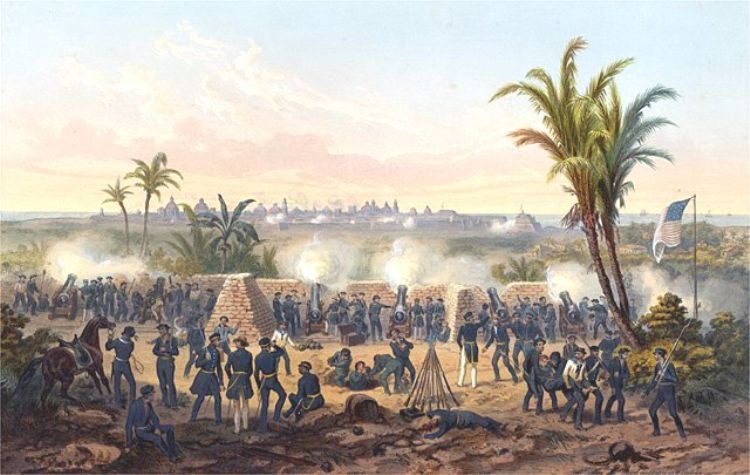The Worst Earthquakes in Mexico

Since we are located in a great seismic zone of the world (the San Andrés Fault in Baja California, Mexico´s location in the fire belt of the pacific and the country´s distribution among 4 tectonic plates), it is common to feel quakes in Mexico. Most of them, are not noticed by the inhabitants due to their low scale; nevertheless, these movements modify, in the long run, the region´s structure. Such will be the change, that it is estimated that Baja California Peninsula will split from the rest of the country in 50,000 years.
The list of important quakes in Mexico is long, for there are registries of earthquakes and their aftermath since the time of the Aztec Emperors, and even though we have learned to reduce the risks and damages, there is still the need for more awareness in terms of prevention and preparation.
The earthquake of February 25th, 1732, was one of the most terrible. Although there are no records of its intensity and duration, the destruction in Acapulco was total, and consequently, a tsunami also took place. The people went to shelters in high zones to escape from the enormous waves. Another two old earthquakes remembered for the great damage they caused, are those of April 7th, 1845, as Tlalpan and Xochimilco were devastated, and the quake on June 19th, 1858, for the damage to historical buildings such as the National Palace, the City Theatre, the City Hall and the almost complete destruction of the city of Texcoco. In 1909, Acapulco suffered once again a total destruction from an earthquake of 7.5 according to Richter's scale. There were many people hurt (although there were only few deaths ) as well as collapses in Downtown Mexico and nearby towns.
Since the 20th. century, the registry of earthquakes began by the National Seismology Service (SSN), founded in September 5th, 1910. One of the first quakes registered was the so called Madero´s earthquake (June 7th, 1911) for it coincided with the entrance of Francisco I. Madero into Mexico City. The dormitory of the 3rd Artillery Regiment in San Cosme collapsed. 250 homes were destroyed and Guzman City collapsed. On January 3rd, 1920, there was a quake between Veracruz and Puebla that left 650 people dead and a great destruction in Jalapa.
The biggest quake registered in Mexico took place on June 3rd, 1932, being its point of origin, the coast of Jalisco and leaving almost 50 people dead. Its magnitude in the Richter scale was of 8.5. Another tragic date was on July 28th, 1957, since a 7.7 earthquake, whose point of origin was in the coast of Guerrero, left more than 160 people dead and a lot of damage in Mexico City and its surroundings. This was known as the Angel´s earthquake, since the Angel of Independence, a well-known statue in Mexico city, fell during the catastrophe.
We must also mention the Veracruz Earthquake. It occurred on August 28th, 1973, and its intensity was of 7.3 degrees in the Richter scale, and increasingly stronger at the high zones. The number of people dead was the biggest in the state, as more than 1200 lost their lives while there were more than 1600 people injured. The affected area was very large, covering three states: Puebla, Morelos and Veracruz. It is also known as the Orizaba earthquake, because this city was the most affected, leaving thousands of houses, buildings, and historical churches destroyed. The depth of the earthquake has been calculated in about 80.7 kilometers.
The Ibero Earthquake took place on March 14th, 1979 and damaged mainly several structures in the Roma neighborhood, destroying the Latin American University. Its intensity was of 7.6 degrees and occurred at 5:07 in the morning.
The most remembered earthquake in Mexico occurred on September 19th, 1985, at 7:19 a.m and it has been considered the biggest natural disaster in the country. The official count is a little less than 10,000 people dead, although there were many missing that still remain as such. The epicenter was in Michoacán and its intensity was of 8.1 degrees in the Richter scale and lasted a little less than two minutes. It is worth mentioning that initially the authorities had not calculated the magnitude of the disaster, to the extent that the country refused the first offer of help. After knowing the magnitude of the damage, various countries offered help to the overwhelmed Mexican rescue teams. More than 4000 people were rescued from under the remains. Some of the most notorious rescues were those that took place at the Juarez hospitals, the Medical Center and the General Hospital. The amazing cases of the âMiracle Babiesâ that were buried for a week and survived, were unparalleled. Multiple repairs had to be done on all the public service systems such as water, transportation and electricity. More than 200,000 jobs were lost and more than 68,000 buildings were damaged. The âreplicasâ or small tremors that took place around this earthquake also caused a lot of damage.
Another state affected by earthquakes has been Colima. On October 9th, 1995, there were a little less than 100 deaths and more than 1000 people homeless. On January 21st, 2003 there was another earthquake in Colima, at 8:06 a.m. leaving 29 people dead and more than 2000 homes destroyed. Finally, it´s worth mentioning the earthquake on April 4th, 2010 in Baja California that, even though it only left five people dead, caused more than 35,000 people to be homeless and damage in cities such as Mexicali, Ensenada, Tijuana and Yuma.
Finally, we have to remember that earthquakes are unpredictable, and that we have to take basic precautions against them such as knowing the procedures and steps to follow during and after one. We should also have a homemade first-aid kit, canned food and legal documents always ready, and have more of an âinsurance cultureâ, so if the worst should happen, we do not face the loss of our material possessions.
Article produced by the Editorial Team of "Explorando Mexico".
Copyright Explorando México, All rights reserved.






